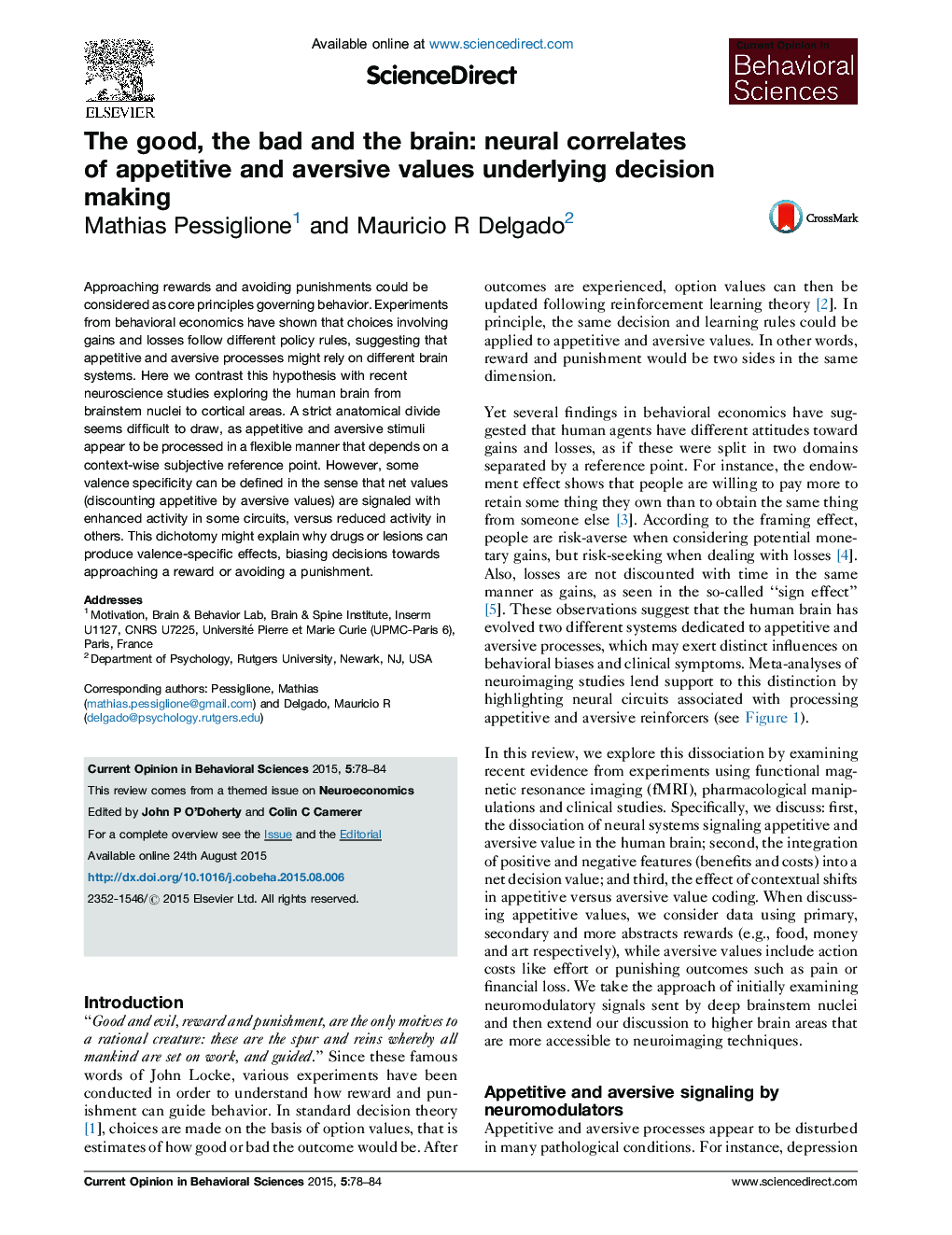| Article ID | Journal | Published Year | Pages | File Type |
|---|---|---|---|---|
| 6260850 | Current Opinion in Behavioral Sciences | 2015 | 7 Pages |
â¢The same brain regions process rewards across reinforcer modalities.â¢No strict separation of brain systems processing appetitive and aversive events.â¢Appetitive or aversive depends on a context-wise subjective reference point.â¢Some brain regions integrate appetitive and aversive values into net values.â¢Net values are positively encoded in some brain regions, negatively in others.
Approaching rewards and avoiding punishments could be considered as core principles governing behavior. Experiments from behavioral economics have shown that choices involving gains and losses follow different policy rules, suggesting that appetitive and aversive processes might rely on different brain systems. Here we contrast this hypothesis with recent neuroscience studies exploring the human brain from brainstem nuclei to cortical areas. A strict anatomical divide seems difficult to draw, as appetitive and aversive stimuli appear to be processed in a flexible manner that depends on a context-wise subjective reference point. However, some valence specificity can be defined in the sense that net values (discounting appetitive by aversive values) are signaled with enhanced activity in some circuits, versus reduced activity in others. This dichotomy might explain why drugs or lesions can produce valence-specific effects, biasing decisions towards approaching a reward or avoiding a punishment.
